问西东
重庆 原·美术馆 崔波
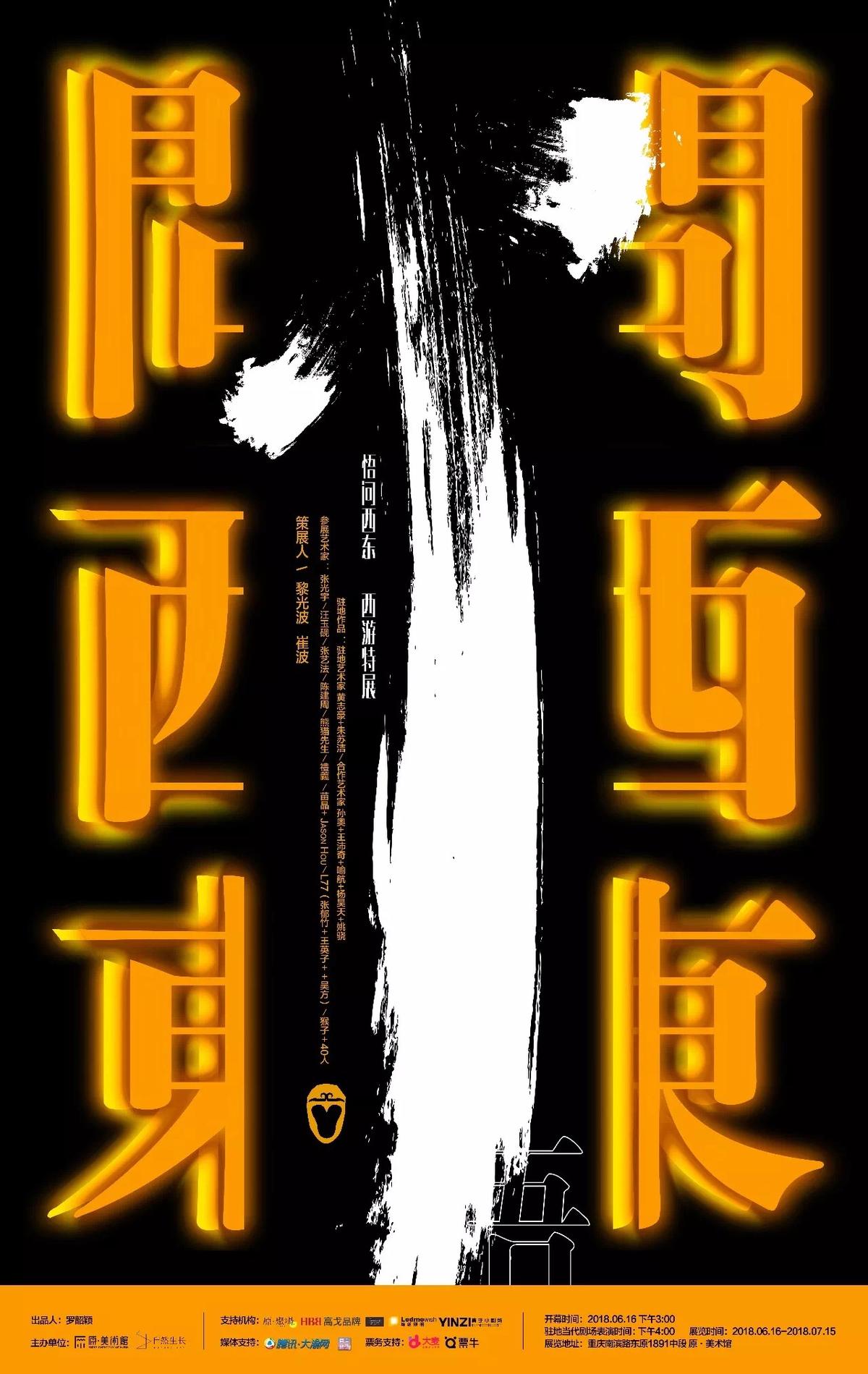
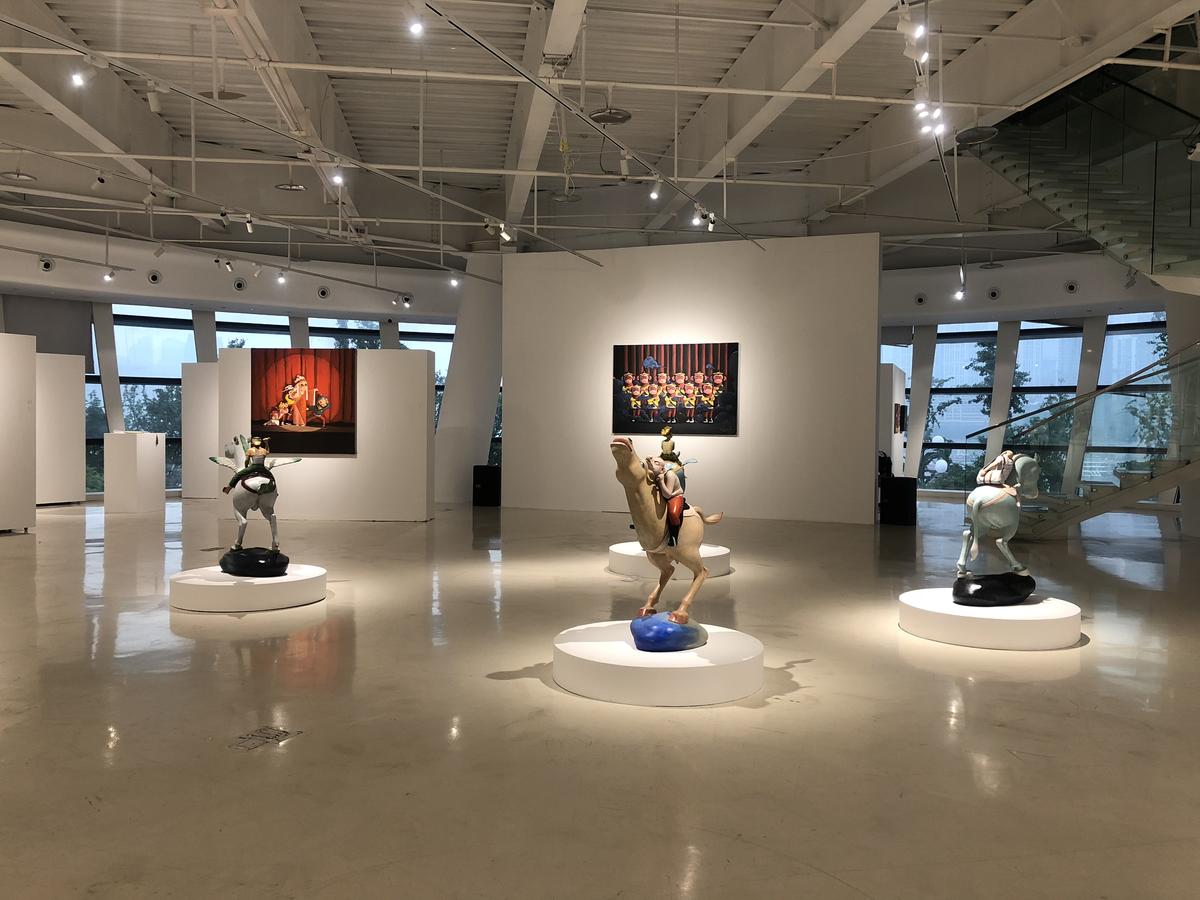
「策展人」
黎光波 崔波
「策展思路」
每个人心中都有一部西游。 1945年,张光宇先生为《大闹天宫》创作了系列人物造型,那是我们最早看到西游人物雏形,转眼73年过去了,中国艺术行业飞速发展。在当下年轻艺术蓬勃生长的今天,作为四大名著之一的西游故事,还会存在在他们的记忆中吗?如果有,那又将呈现出何等多元化的视觉表象?他们又会怎样的解读西游呢? 本次O'Kids小原圈国际儿童艺术节,我们正是想通过《悟问西东—西游特展》,对‘西游"进行一次时间和空间上的再次解读。我们将张光宇先生的《西游漫记》丝网版画与十多名来自不同地域的青年艺术创作者一起,把西游的不同解读方式和多元化的创作方式呈现给观众, 并以"西游"为切入口,跟大家探讨传统文化的传承、创新、演变的过程。
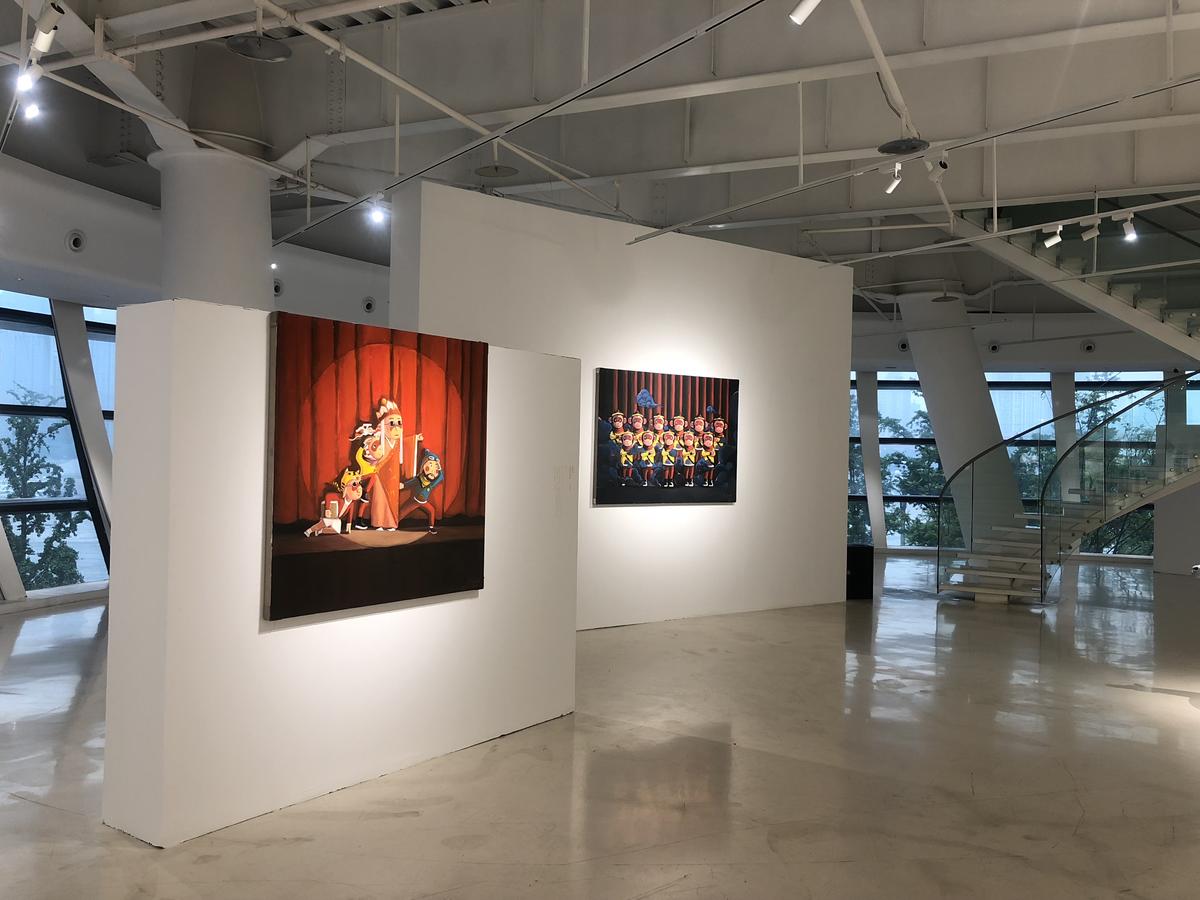
重写的西游
崔波
画孙悟空的种子是张光宇先生1945年创作《西游漫记》时就种下的。《西游漫记》如今视为张光宇漫画的集大成之作,汇集了一幕幕光怪陆离的超现实主义场景。用超现实的手法来表现现实,讽刺的就是日军投降前后的社会乱象。也正是在1945年3月的重庆,张光宇先生的《西游漫记》第一次在重庆首展,反响空前。
一提起张光宇先生,就是《大闹天宫》,就是“孙悟空之父”,先生自己或许也没有想到,这部电影能够超越以往一切手段,让他创作的中国形象长久地流传下来。在二三十年代活跃在上海滩的一批画家、作家、诗人、出版人等自由知识分子中间,先生是一个旗手 一位中国新美术运动的开山人物。
我们很难确定地把张光宇先生归到哪一个具体的艺术行列,他一生的经历用当下流行的话语就是不停地“跨界”。他是漫画家、美术家、装饰画家、出版家,还是中国影视艺术与设计的先驱,集中国传统艺术素养与现代精神及西方艺术创作气质于一身。同时,先生的艺术观念在当时十分超前,直至今天仍然具有借鉴意义。
73年后,张光宇先生重新回到重庆了。与张光宇丝网版同时展出的还有很多喜爱西游、喜爱孙悟空的青年艺术家们。他们用一个主题这里编制着一个又一个有关西游的故事,有的来自道途听说,有的来自天马行空的想象。他们有一个共同的特点,就是灵异,所以大多时候西游故事本身就像一张能动的画面或一个神秘的影像。他们确定了自己的艺术语言后,用自己擅长的表现方式,通过油画、水墨、雕塑、纸本淡彩、插画、行为摄影、声音影像装置、空间植物装置甚至“驻地剧场”的 方式呈现。不过这些年轻艺术家们没有预设“强迫式”的观看方式。而是将阅读或聆听或观看或体验的权利让渡过给了观众。正是这样一种让渡,西游故事被带入了一个新的时间和事件的维度。既拓宽了艺术作品在现实生活中的存在状态,还延伸艺术本身内在的精神。
但这些艺术家们并没有显著“西游思维”,他们从小阅读、接触的文艺作品,精神体验都是西方的。他们使用的艺术语汇基本就是西方式的,他们的作品更个性、更自我、信息化、网络化、媒体化、技术化、图像化、消费化等等错综复杂的情景影响着他们的创作。他们在重现“西游思维”和社会习得的过程中,呈现出一种私人而普世的亲密感和依恋,将过往的关系和记忆召回。
张光宇先生在1928年的文章中主张艺术道路要宽和通,但是宽和通是有选择的,外国的东西他们有选择,不是所有外国的东西都能拿过来,要融到我这里,而不是我融入它们。当代艺术如何在日常中创造的想像力和协商方式,年轻艺术家同样也在关注东西方艺术的现在和未来,借鉴与融合,这对当下的艺术家来说,也是未知的,是需要不断去探索和突破的。
中国年轻的艺术家走什么样的陆,原来张光宇先生早就提供了一条有价值的路。
The RewritingJourney to the West
Cui Bo
The plan of Mr. Zhang Guangyu to paint Sun Wukong was firstly formed at the time when he created Sketches to Journey to the West, which is deemed as the cartoon masterpiece of Zhang Guangyu nowadays. It illustrates pictures of super-realistic scene, and expresses practical situation by super-realistic means, making a crack on the social chaos before and after the Japanese surrender. It was right in Chongqing in March 1945 where the Sketches to Journey to the West of Mr. Zhang Guangyu was the firstly exhibited, which attracted unprecedented feedback response.
Whenever we talk about Mr. Zhang Guangyu, the thing that cannot be ignored is his Havoc in Heaven. He is "the father of Sun Wukong". Maybe Mr. Zhang hadn’t thought that this film can surpass all previous means and make the Chinese character image he created survive in long time. Among the free intellectuals of painters, writers, poets, and publishers who were active in Shanghai in 1920s-1930s, Mr. Zhang was a pioneer in the Chinese new art movement.
It is difficult for us to identify Mr. Zhang Guangyu into a certain specific art category. His life experience, according to the popular phrases, can be called keeping “crossover”. He is a cartoonist, artist, decorative painter, publisher, and a pioneer in Chinese film and television art and design, combining both Chinese traditional art literacy with modern spirit and Western art creation temperament. Meanwhile, Mr. Zhang’s artistic concept was very pioneered at that time. And even today, his concept could be taken for references too.
73 years later, Mr. Zhang Guangyu returned to Chongqing. Besides the screen printing version of Zhang Guangyu, there exhibited stories on “Journey to the West” from lots of other young artists who love the “Journey to the West” and “Sun Wukong”, among which, some of the stories are relied on hearsay, and some others are relied on imagination. However, all these stories have one thing in common, that is: they are all supernatural. Therefore, most stories about “Journey to the West” are like a moving picture or a mysterious image. After determining their artistic language, they use the expression modes that they are good at to present the story in forms of oil painting, ink painting, sculpture, paper pastels, illustrations, behavioral photography, sound imaging devices, space plant installations and even "resident theaters". However, these young artists set no “forced” watching mode, instead, they give the right of reading, listening to, watching or experiencing to audiences. It is such a kind of right transfer that brings the story of the “Journey to the West” into a new time and event dimensions, which not only broadens the existence status of artistic works in real life, but also extends the inner spirits of the arts.
However, these artists do not have significant "Journey to the West Thoughts" because the literary works and spiritual experience they’ve read and contacted since a young age are western culture. Therefore, the artistic vocabulary they apply is also basically Western. It can be seen from their works that they are affected in creation by complicated factors like personality, self-recognition, informatization, Internet, media, technology, graphical performance, and consumption-orientation. In the process of recreating "Journey to the West Thoughts" and social acquisition, they present a private but universal intimacy and attachment, recalling the past relationships and memories.
Mr. Zhang Guangyu expressed his view in an article of 1928 that the path of art should be wide and smooth with proper choices. As for foreign elements, we should properly select because not all foreign things fit us well. It is us that need to involve foreign element, instead of being involved by them. How modern art creates imagination and negotiation in daily life, young artists also pay attention to the oriental and western arts at present and in the future to take reference and achive fusion of the two. This is also unknown to modern artists, and needs to be explored and broken through continuously.
What kind of path should the young Chinese artists take? Mr. Zhang Guangyu has already provided a valuable choice already!
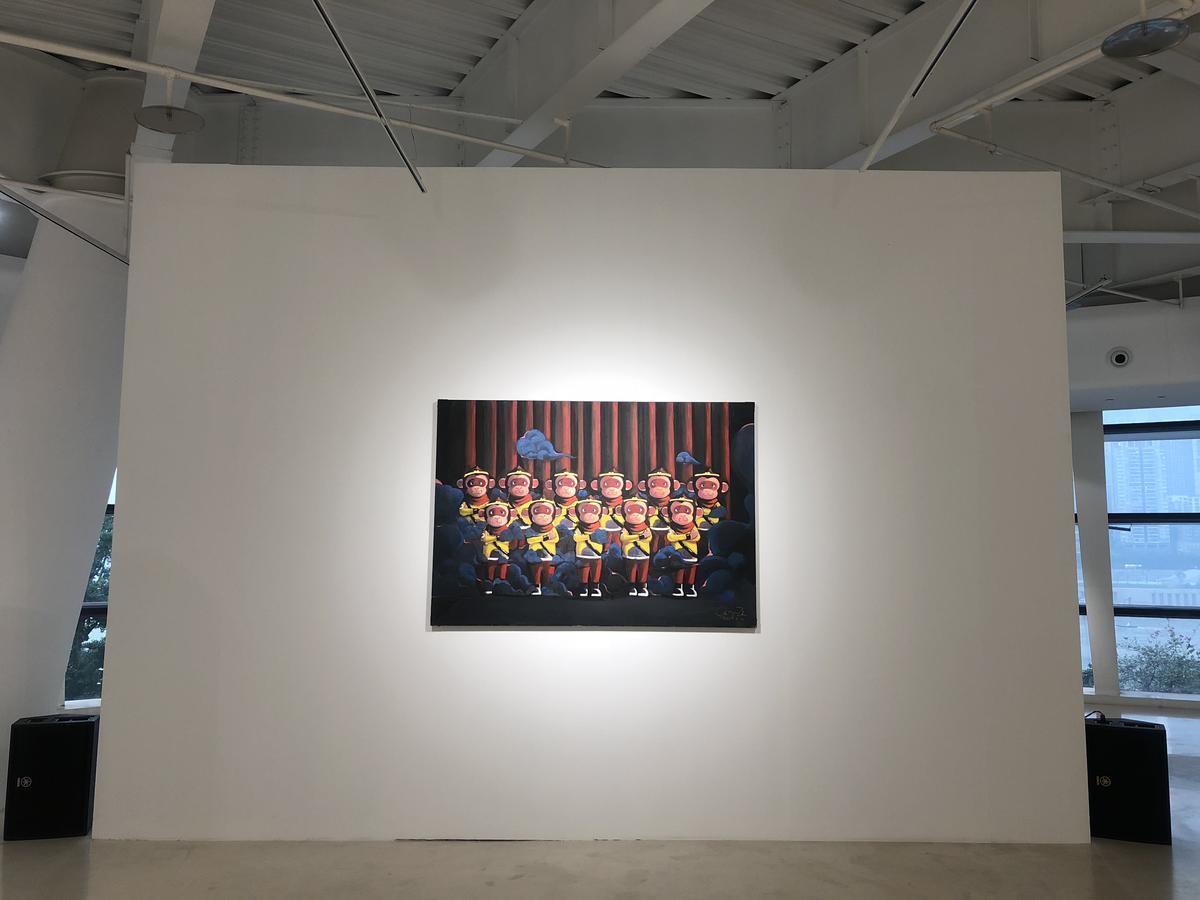
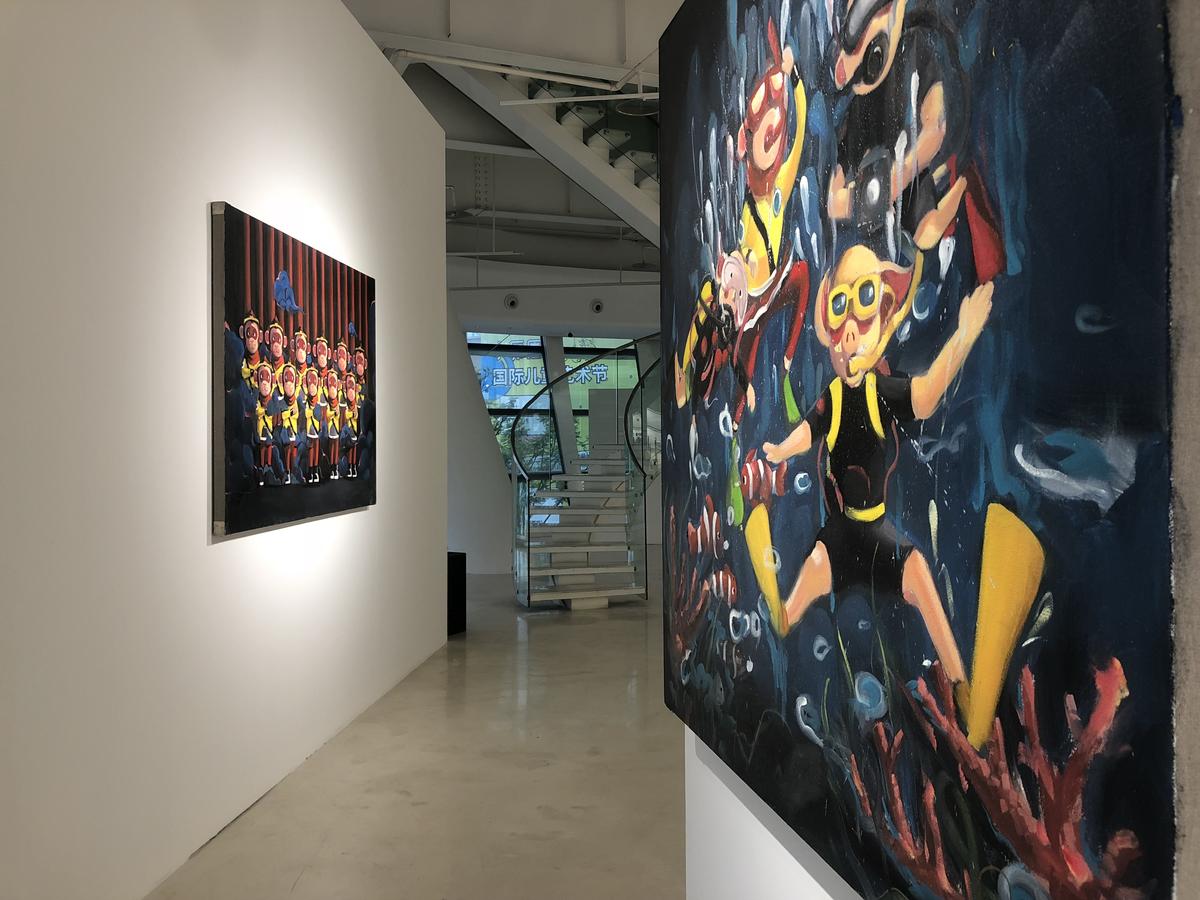
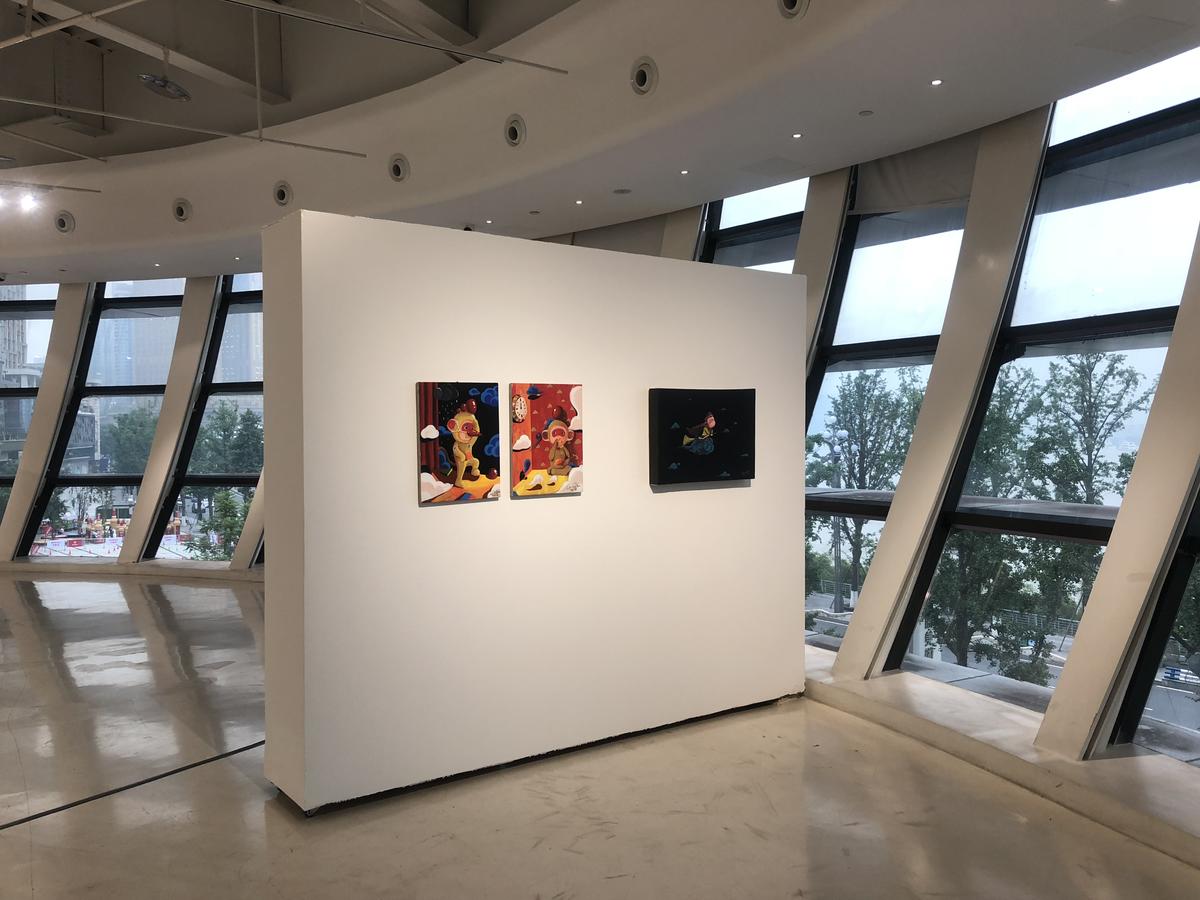
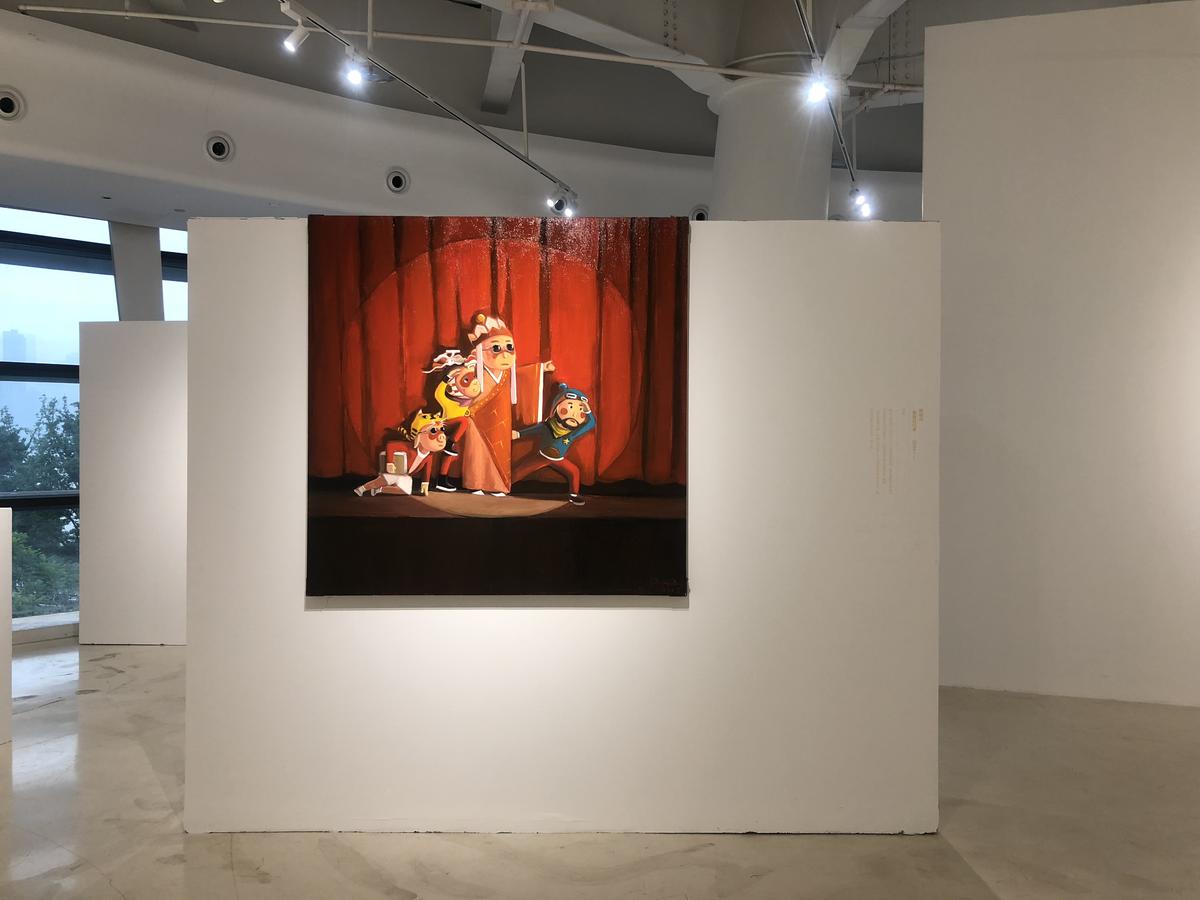
陈建周艺术家专访
1. 您的《西游记系列》作品风格很独特,这种风格是如何形成的呢?
是的,我一直想找一个属于自己的风格,要与众不同,我经常反复钻研,最终形成自己风格,因为别人没有把西游记画成可爱,好玩的样子,于是我画了,所以形成了这种风格吧。
2. 展出的哪一幅作品的创作过程最让您印象深刻?为什么?
无题那个,就是师徒四人在舞台上向同一方向张望那副。这幅作品我是借鉴刘野的作品,感觉好玩吧,所以喜欢。
3. 您觉得做艺术家是一种什么体验?能描述一下吗?
很开心,很自由,不受限制。
4. 有人看过您的作品之后形容您的形象是,长头发的文艺帅哥。描述的准确吗?您怎么描述自己的形象呢?
艺术家不一定全是长头发,我就不是长头发,我是“绝顶艺术家”,哈哈
5. 我们线下征集了一些问题,他们觉得艺术家在生活中房间很乱、不洗碗,为了找灵感好几天也不洗澡,您是这样吗?您怎么看待这个问题?
印象中的艺术家是这样,现实中的艺术家未必这样,我房间不乱,还算干净整齐,洗澡也是有的。我觉得这很正常。
6. (10只猴子那幅画)的创作灵感是什么?有人说是来源于孙悟空的分身术,是这样吗?
十只猴子的内容是,为了不让二郎神抓到自己,所以分身,二郎神是分不出来哪个是真的。
7. 10只猴子的寓意是什么?他们眼睛看向什么方向?
这幅作品,告诉大家,团结是力量,大家拧成一股绳,力量强大。大家都老向二郎神。
8. 您觉得大家通过您的作品感受到的东西是您想要传达的吗?
我想要通过作品让大家感觉到喜悦,快乐,一种正能量的东西